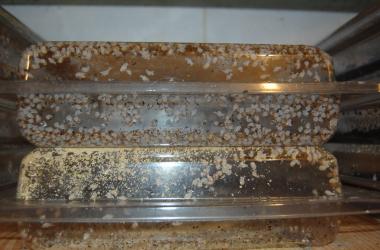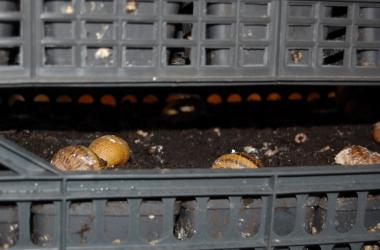
29 April 2016 Baby snails from the “Mokry Dwór” Snail Farm
These are our little Helix Aspersa Muller snails. We use cuvettes specially prepared for edible snails farming at our farm. The cuvettes are very practical, made of sturdy plastic with small openings drilled in the sides. The top part of the cuvette is placed on the bottom part, it is stable. Of course, other containers […]












